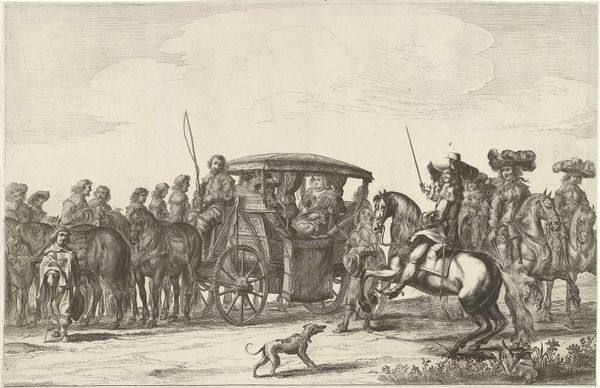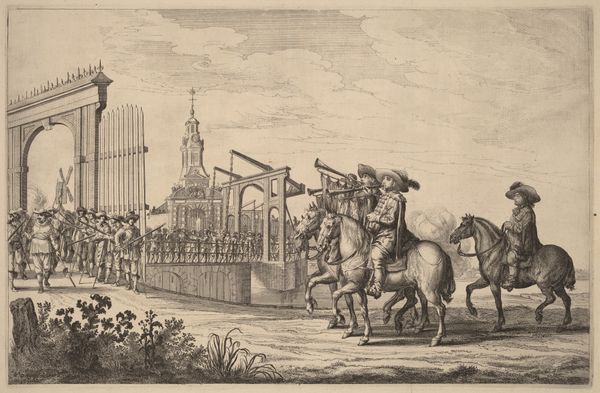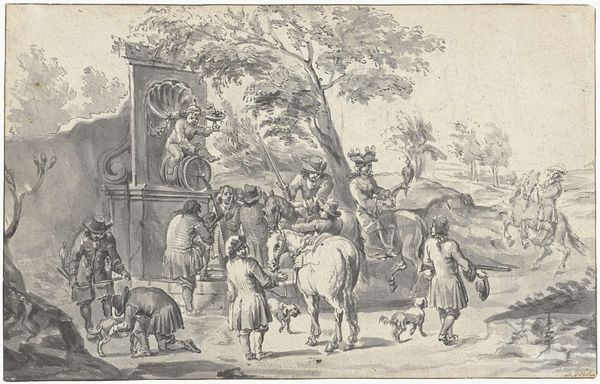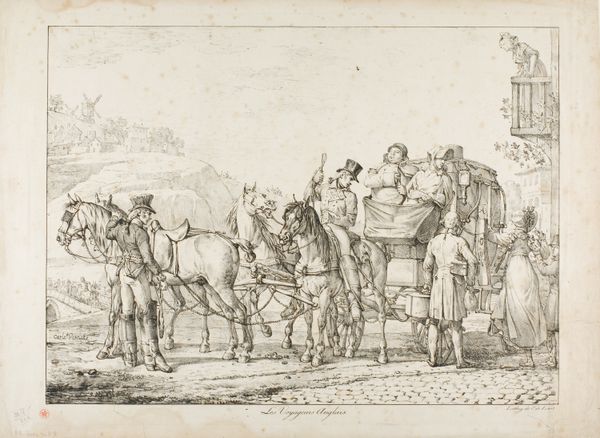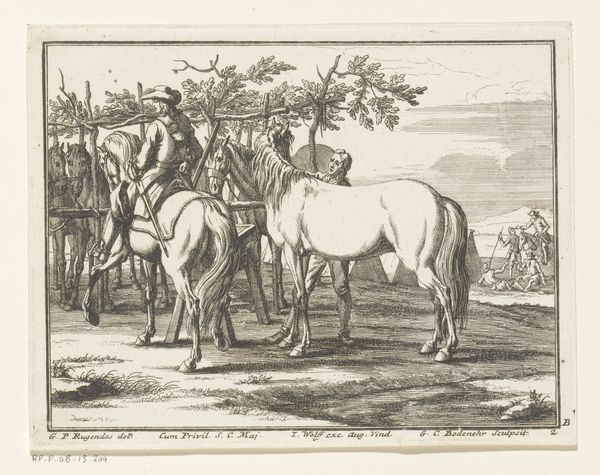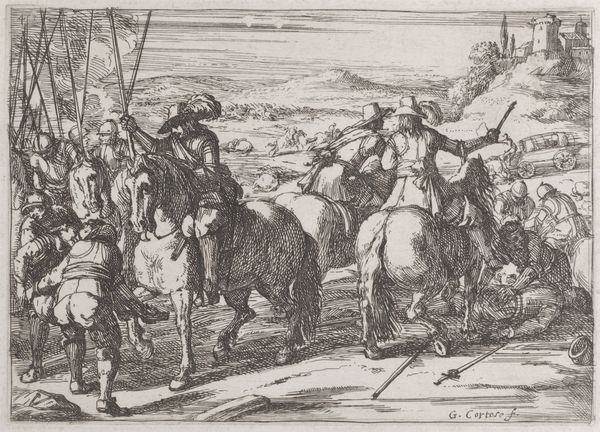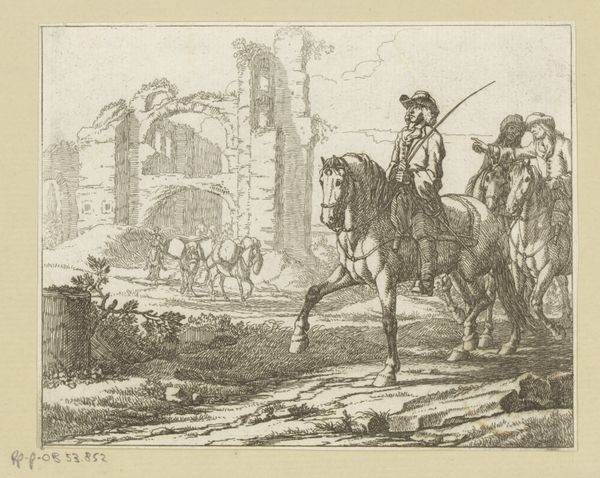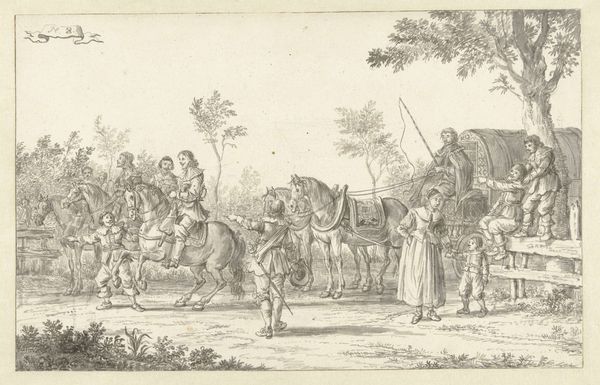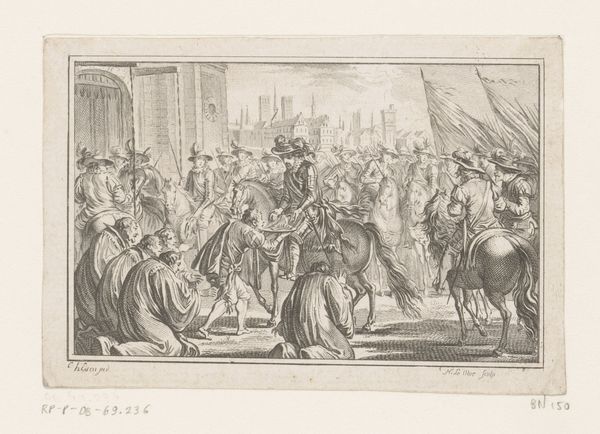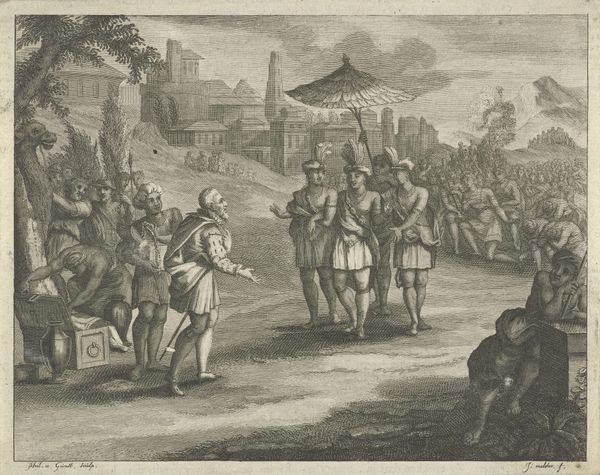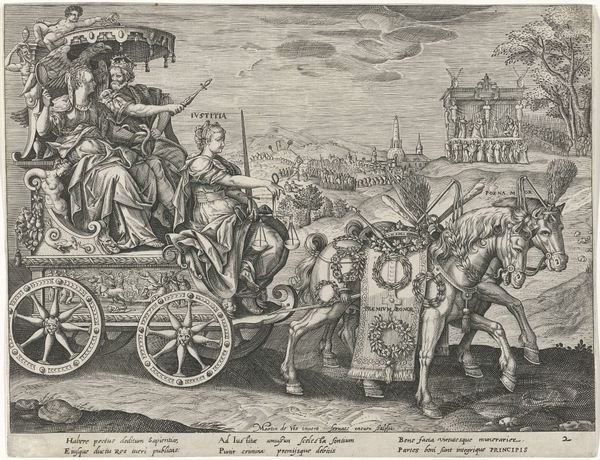
Intocht van Maria Henrietta Stuart, prinses van Oranje te Amsterdam (plaat 1) 1660 - 1662
0:00
0:00
pieternolpe
Rijksmuseum
print, engraving
#
baroque
# print
#
figuration
#
cityscape
#
history-painting
#
academic-art
#
engraving
Dimensions: height 317 mm, width 368 mm
Copyright: Rijks Museum: Open Domain
Editor: Here we have Pieter Nolpe's engraving from 1660-1662, depicting the Entry of Maria Henrietta Stuart, Princess of Orange, into Amsterdam. It’s such a detailed print. What I'm most struck by is the artist’s commitment to documenting this historical event. What else should we notice about this artwork? Curator: It's important to consider the role of prints like this within 17th-century Dutch society. This image isn't just a record; it’s a carefully constructed piece of political theater rendered for mass consumption. Ask yourself, what message is being conveyed through this depiction of the Princess's arrival? Editor: I see the orderly lines of soldiers, the celebratory musicians, the imposing architecture. It all feels designed to project power and legitimacy. Curator: Exactly. Nolpe, like many artists of his time, was keenly aware of the power of imagery to shape public perception. The inclusion of specific architectural details and the arrangement of figures serve to legitimize the House of Orange and visually connect them to Amsterdam's prosperity. Who do you think the audience for this piece might have been? Editor: Given it’s a print, probably a wider audience than just the aristocracy. Maybe wealthy merchants and ordinary citizens who would buy this to commemorate the event and signal their support? Curator: Precisely! Prints made art accessible, fostering a sense of shared identity and participation in these displays of power. So, we need to ask: How did the widespread distribution of such imagery affect the public’s understanding and relationship with their rulers? Editor: This makes me think about the relationship between art, politics, and public opinion back then, and how similar dynamics play out even today in our own media. Curator: Indeed. Considering art through its historical and social context can be really powerful in how we see our modern culture.
Comments
No comments
Be the first to comment and join the conversation on the ultimate creative platform.
